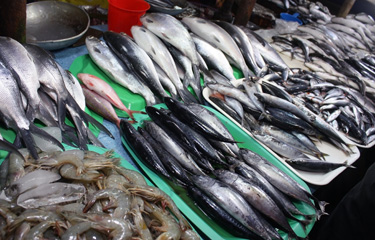Philippines hikes round scad imports in effort to contain domestic prices

The Philippines’ decision to import an additional 60,000 metric tons (MT) of fish has failed to help bring down domestic prices.
The Philippines Agriculture Secretary William Dar said in early October the country planned to increase its imports of round scad and mackerel from China and Vietnam, in advance of an annual fishing ban in the country, The Philippine Star reported 28 November.
From 1 November, 2021, to 31 January, 2022, all fishing activities in Palawan, the Visayan Sea, and Zamboanga will be banned to protect fish species – primarily round scad – during their peak spawning season. The policy is also aimed at addressing overfishing and climate change issues, Dar said.
The Philippines’ National Fisheries and Aquatic Resources Management Council and Navotas Fishing Operators, a local fishing group, warned the ban will result in a domestic shortfall of around 30,000 MT of fish, and said the decision to import more than double the shortfall is likely to negatively affect the local fishing sector.
They also noted the imports have not suppressed a rise in domestic fish prices, which have surged recently due to high fuel prices and adverse weather conditions impacting fishing effort. Prices for round scad, which is highly popular in the domestic market, have remained between PHP 200 and PHP 240 (USD 4.00 and USD 4.80, EUR 3.50 and EUR 4.20) per kilogram, market data from the Philippines Department of Agriculture showed.
The Philippines produced 995,466 MT of fish in the third quarter, down 2 percent year-on-year, The Manila Times reported on 19 November, citing data from the Philippine Statistics Authority. Output from country’s aquaculture sector was 478,417 MT, down 0.5 percent from 2020, accounting for 48.1 percent of the country’s total seafood production.
The country’s bigeye tuna catch was down 41.1 percent, while its catch of frigate tuna was 21.1 percent lower year-on-year. Its yellowfin tuna catch declined 19.9 percent and its blue crab haul fell 22.1 percent from a year ago.
Photo courtesy of Trish Rubio/Shutterstock






Share